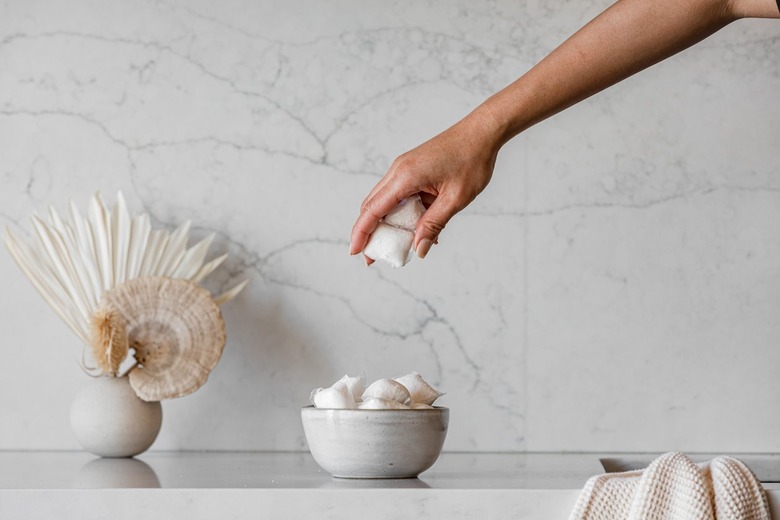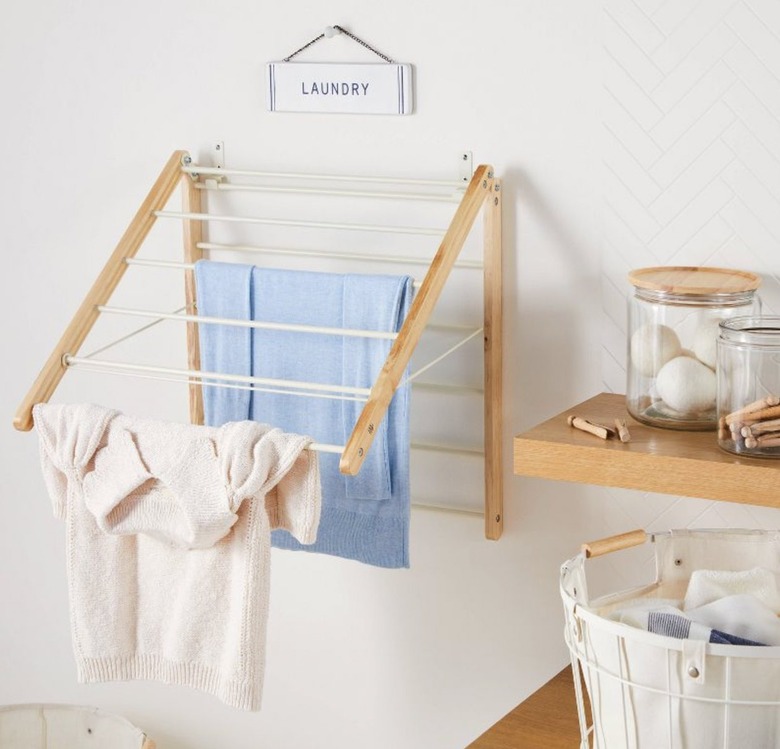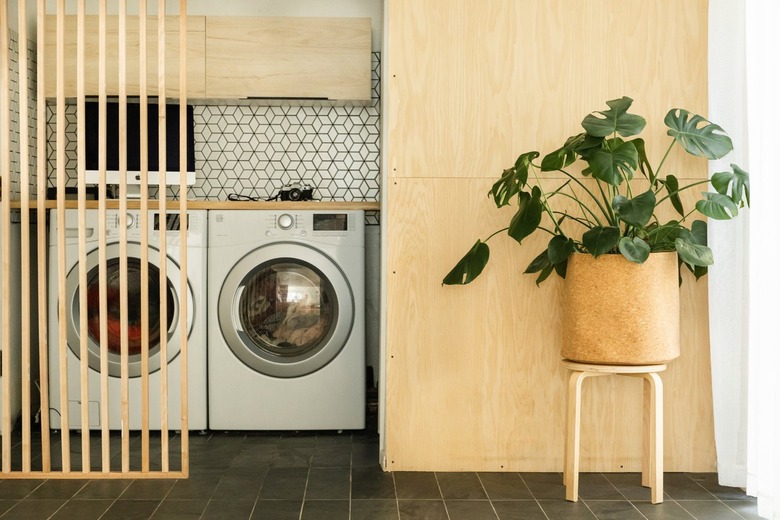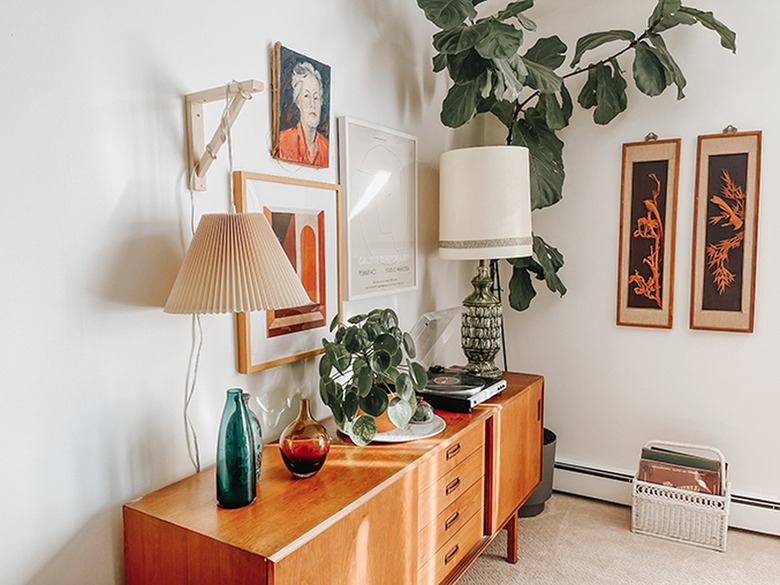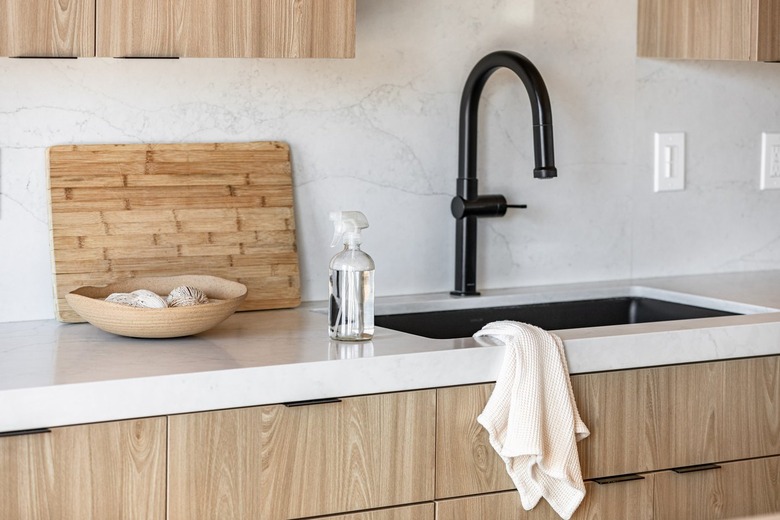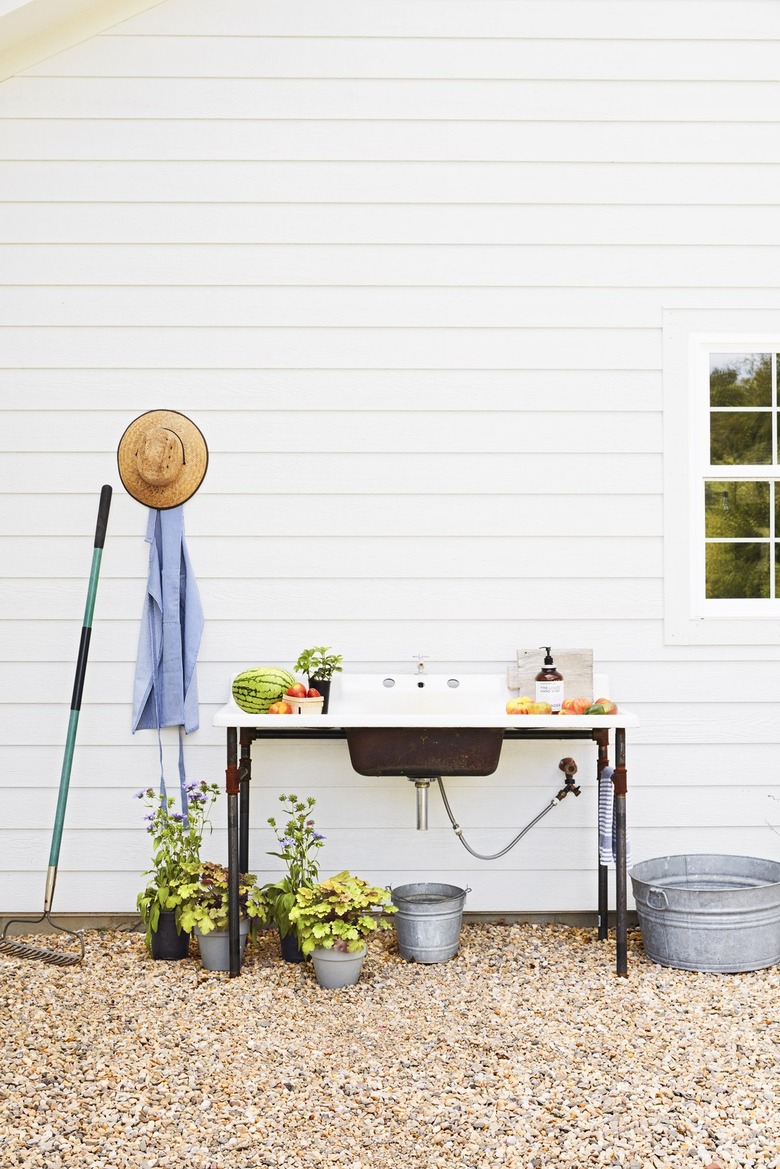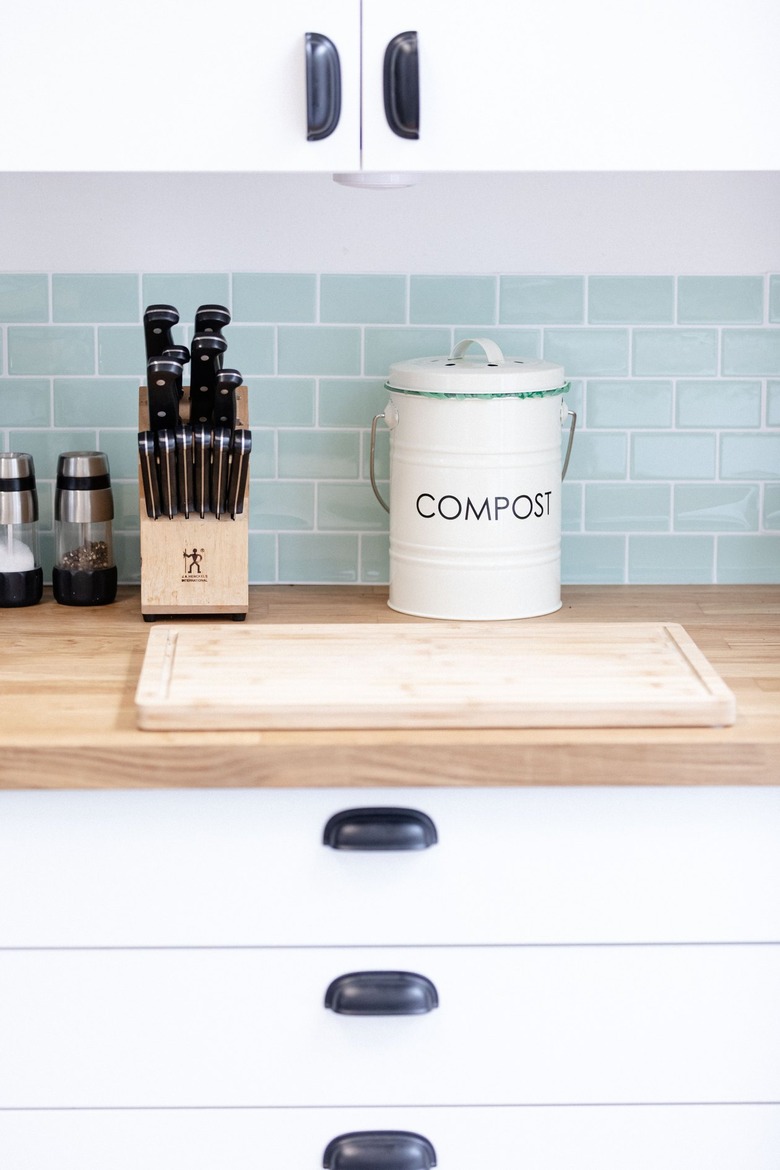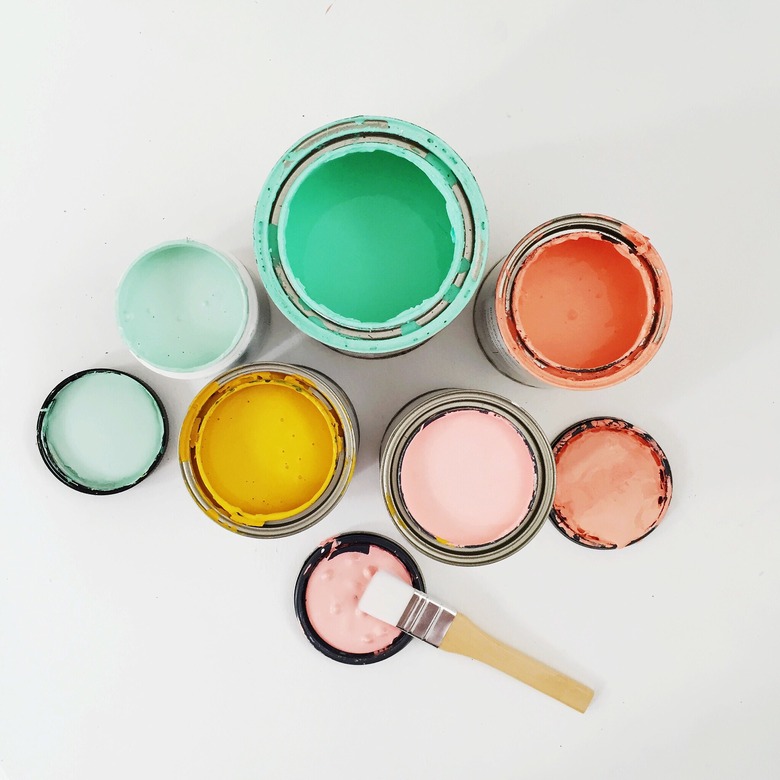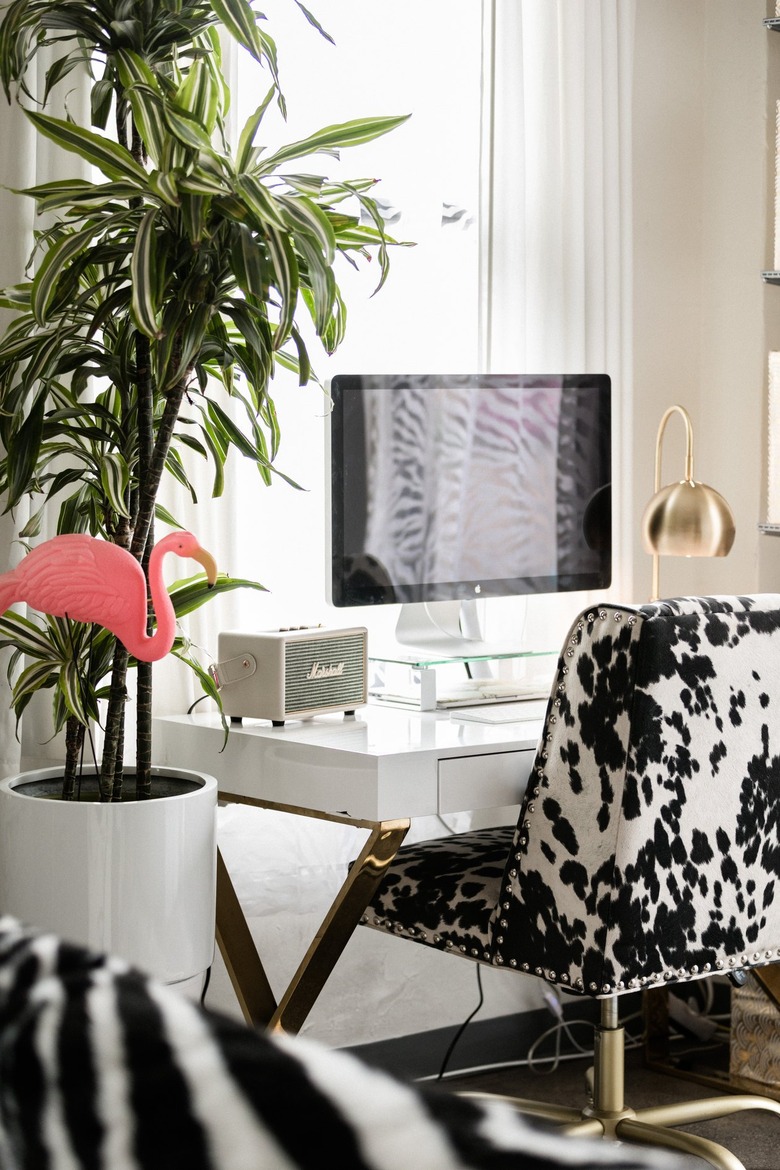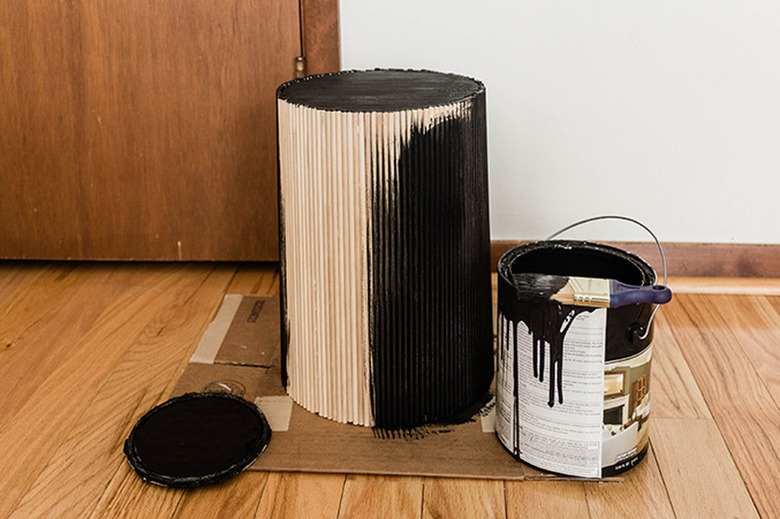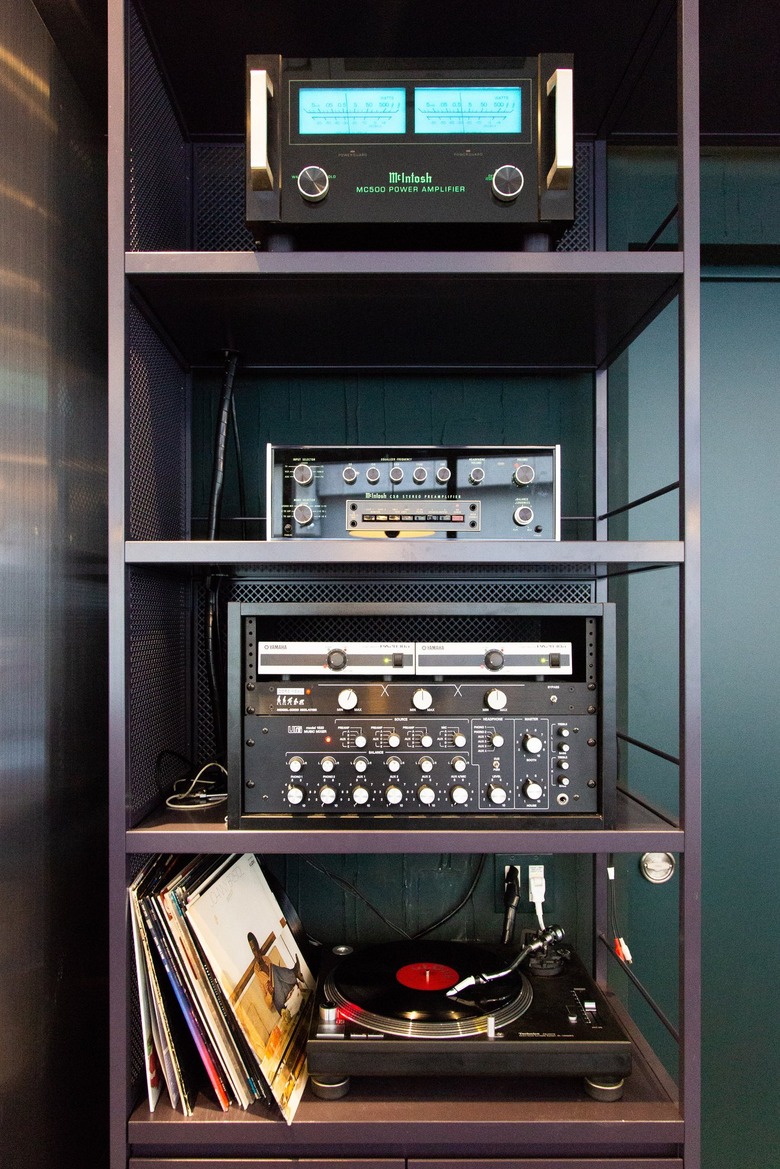12 Easy Ways To Make Your Home More Sustainable
Want to go green but don't know where to begin? Making a commitment to Mother Nature doesn't have to mean installing solar panels (although that's an awesome option). There are plenty of environmentally friendly changes you can make to your own home. Read on for 12 ways to easily turn your pad into an eco-palace.
1. Buy a clothesline or drying rack.
Sadly, dryers aren't the beacons of energy efficiency we wish they were. The solution? Whenever possible, forgo the machine and use a clothesline or rack to dry garments.
Our pick: Hearth & Hand With Magnolia Foldable Drying Rack, $39.99
2. Invest in energy-efficient appliances.
Upgrade appliances (dishwasher, refrigerator, washing machine, etc.) to those that meet Energy Star standards. This government-backed symbol provides consumers with some peace of mind knowing that their appliances have been independently certified to meet EPA standards on quality, performance, and savings. Yes, it's an investment, but it's well worth it in the long run. You can keep track of all of your energy-saving activities here to see how your impact adds up.
Our picks: Whirlpool Energy Star 55-Decibel Dishwasher, $611; GE Energy Star French Door Refrigerator with Ice Maker (24.8-cu. ft.), $2,099; GE Energy Star UltraFresh Vent System Stackable Washer, $1,049
3. Upgrade to LED bulbs.
Light-emitting diode (LED) and compact fluorescent lamp (CFL) bulbs use 75% less energy than incandescent bulbs. Plus, they last up to 25% longer. Better for your monthly bill and the environment? Now that's what we call a win-win.
Our pick: Amazon Basics 60 Watt Equivalent Soft White A19 Light Bulbs (set of 2), $9.35
4. Switch to natural cleaning products.
Traditional cleaning products are packed with VOCs and other nasties. Not cool. Natural alternatives are widely available online and at supermarkets or mass retailers. Or, if you're a DIY diva, why not mix up your own all-purpose formula using vinegar, baking soda, and water?
Our pick: Rosey Cleaner Concentrates & Reusable Spray Bottles Bundle, $36.99
5. Step up your plant game.
Welcome greenery into your dwelling. Plants filter carbon dioxide and thus improve indoor air quality. And on an aesthetic level, they look so lush and lovely.
Our pick: The Sill Monstera Deliciosa, $58-$88
6. Rethink the way you’re washing dishes.
Washing dishes is a major water waster. Instead of letting the faucet run, change your method. Grab two metal containers. Fill one with hot water and eco-soap and the other with plain H20 for rinsing. And instead of dumping both tubs down the drain, pour 'em onto your plants. Since the soap is all-natural and biodegradable, it's totally fine for your leafy friends.
Our pick: Wanang Stainless Steel Washing-up Bowl, $39.28
7. Collect and reuse water.
You know what they say: "April showers bring May flowers." This can (and should) be true throughout the year. Collect the water from your outdoor kitchen (or rainwater whenever the weather permits) with a bucket, and reuse the water for your lawn and garden.
Our pick: World Market Galvanized Metal Party Bucket, $16.99
8. Set up a composting bin.
Compost piles get a bad rap for being smelly, but if done right, that shouldn't be the case. Score a securely lidded compost bin with a charcoal filter (people rave about Norpro) for odor-free storage. Periodically, transfer the contents to a larger outdoor container — either in the backyard or a community drop-off location.
Our picks: Urban Outfitters Ceramic Compost Container, $49; Norpro Replacement Filters for Ceramic Compost Keeper, $10
9. Only purchase low- or no-VOC products.
According to the Environmental Protection Agency, many household items, including paint, varnish, wax, cleaning supplies, disinfectants, and carpets contain volatile organic compounds (VOCs), which can irritate the eyes, nose, throat, and respiratory tract, cause headaches and affect the central nervous system. Reduce indoor air pollution by purchasing low- or no-VOC products, and recycling those that you currently own. For instance, you can responsibly dispose of any old paint by dropping it off at a PaintCare location for recycling.
Our pick: Valspar Signature Semi-Gloss Paint and Primer, $21.98
10. Get off of junk mail lists.
Unless you enjoy wasting paper (and who does?), use a free site like Catalog Choice to remove yourself from mailing lists — and make flyers, advertisements, and other unwanted solicitations a thing of the past.
11. Reduce. Reuse. Recycle.
Recycling shouldn't be limited to milk cartons and cardboard boxes. Instead of tossing old furniture by the wayside, breathe new life into your well-worn pieces with a crafty facelift. Need some upcycling inspo? Check out this DIY dresser transformation.
12. Unplug electronics.
Have you heard of phantom energy? Contrary to popular belief, your devices aren't actually off when you hit the power button — meaning electricity is still escaping even if they're not in use. This may be the easiest tip of all, especially before you go on vacay: Unplug 'em. Problem solved.
